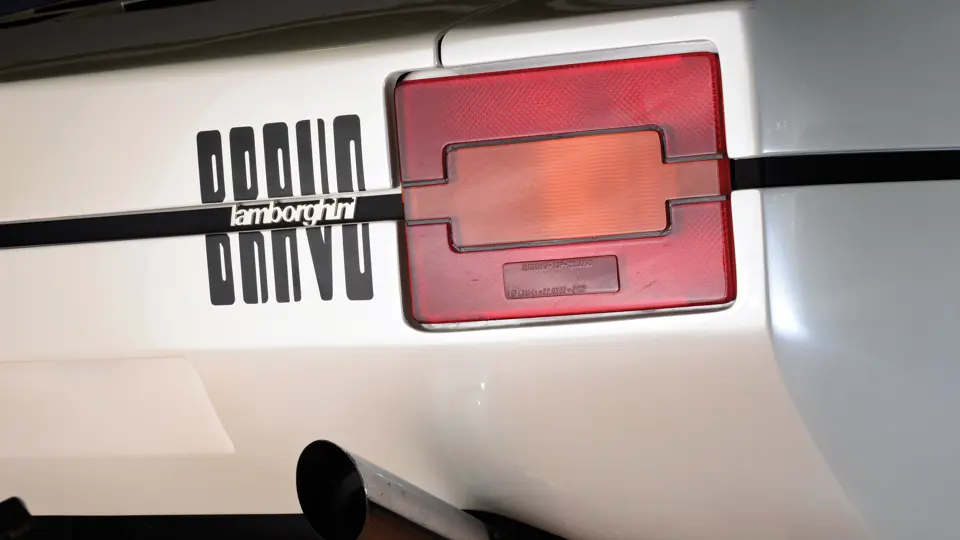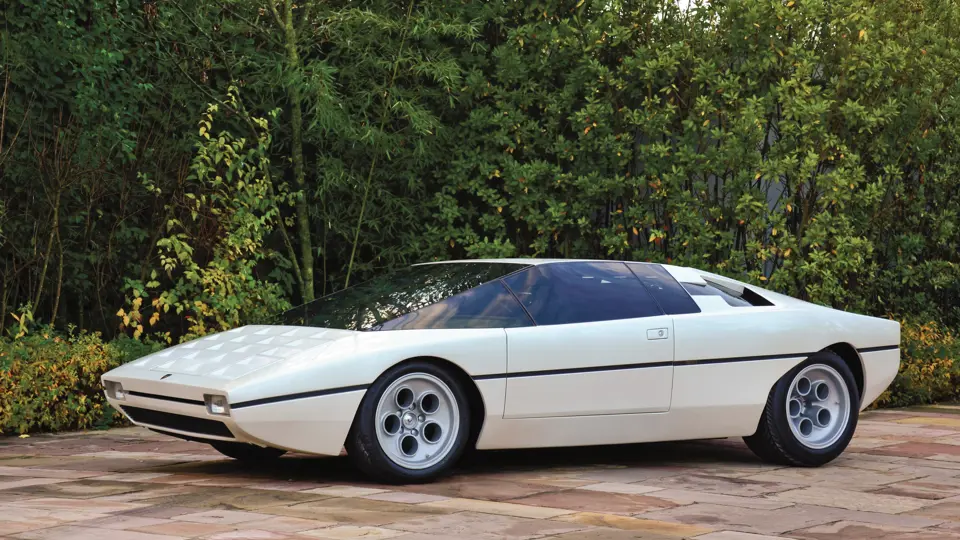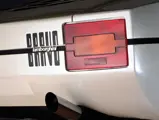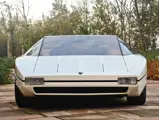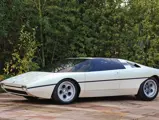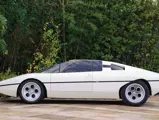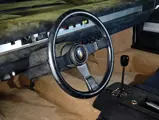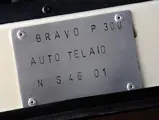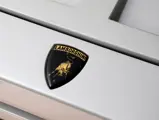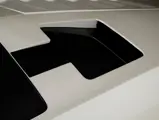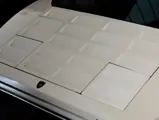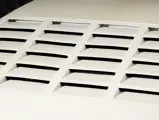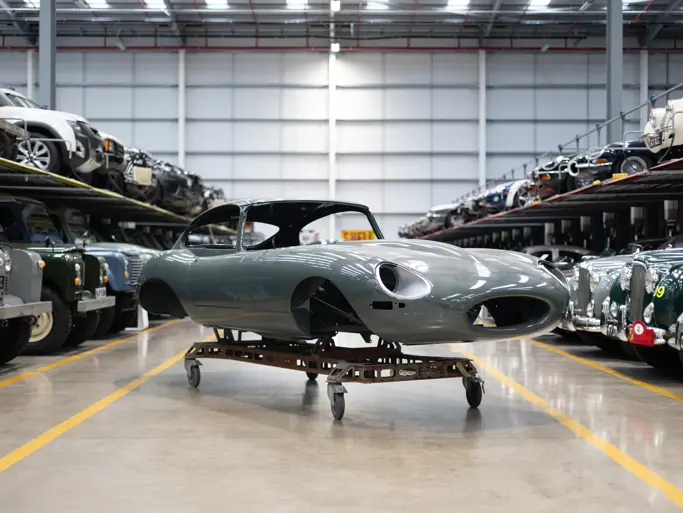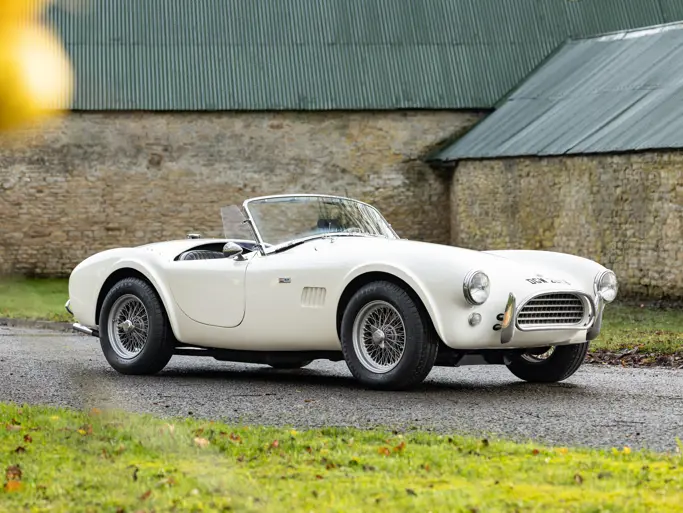300 bhp, 2,996 cc transverse mid-mounted 90° V-8 DOHC engine, five-speed gearbox, independent front suspension with McPherson struts, independent rear suspension with Chapman struts, dual-circuit hydraulic brakes, 278 mm discs all round. Wheelbase: 2,250 mm (88.6")
- From the Collection of Bertone S.p.A.
- Unveiled at Turin Motor Show, October 1974
- Intended as two-seat V-8 companion to Urraco 2+2
In just 10 years after its founding in 1963, Lamborghini rose to become a powerhouse in Italy’s supercar echelons, rivalling Ferrari and Maserati. Starting with the ground-breaking Miura, the Sant’Agata Bolognese manufacturer had begun a fruitful collaboration with Bertone, which also spawned the Espada and Jarama and culminated in 1973 with the launch of the outrageous Countach. In parallel to those V-12-powered cars, Lamborghini launched a V-8 line with the Urraco in 1970. It was on this chassis that Bertone based its third Lamborghini dream car after the 1967 Marzal and the 1971 Countach prototype.
Just as the former two had led to production models, Bertone hoped the Bravo would be adapted into a two-seater model to sit alongside the 2+2 Urraco in Lamborghini’s line-up. For this reason, the proposed car was a good 20 inches shorter than the Urraco, with its wheelbase chopped accordingly by 7.8 inches. The engine was the three-litre unit of the P300 version of the Urraco, launched concurrently. It was fed by four twin-choke Weber carburettors. In a 1970s road test, Road & Track praised the car for its power delivery and the precision of both its steering and its handling, concluding that “it is everything the Urraco could and should have been.”
The Bravo’s styling was certainly striking, in the vein of Marcello Gandini’s previous styling exercises for Bertone. The sharp wedge shape was cut off by flat, near-vertical surfaces front and rear. The base of the windscreen was set ahead of the front axle, and its very steep angle of rake almost matched that of the short front bonnet. Likewise, the surfaces at the top of both front and rear wings gently twisted to match the inclination of the side windows, a treatment Gandini had honed through the Stratos Zero and Countach. The talented designer complemented this basic shape with some strong graphic features, such as the very geometric slats that pierced both front and rear bonnets or the slanted rear wheel-arch cut-outs that were becoming his trademark. The wheels themselves introduced the theme of the five round holes that remained a Lamborghini staple right up to the Murciélago. Pop-up headlights were neatly concealed in the louvered front panel. While all other glass panels were meticulously mounted flush, the way the rear three-quarter window gently folded into the bodywork to create air intakes for the engine bay was another highlight of Gandini’s magic touch.
The interior was equally essential, with Alcantara covering the low-slung bucket seats and dashboard and a graphic approach to the instrumentation layout: all dials and warning lights were located in a single horizontal strip recessed in the dashboard’s fascia, framed by brushed aluminium. Although the windscreen was basically divided into three parts, the very thin frame holding the glass allowed for excellent forward visibility. It was Lamborghini chief engineer Paolo Stanzani himself who reportedly had requested large glass areas and a smooth integration of glass surfaces with the body.
In his history of V-8 Lamborghinis, Lamborghini Urraco & The V8s, French journalist Jean-François Marchet stated that the Bravo, codenamed “Studio 114” internally, had covered 70,000 kms of testing. Whether this mileage was done possibly before the car was made into a prototype by Bertone, or perhaps by a separate test mule, is not known, but certainly the car and its engine as they stand today do not show the wear and tear signs usually associated to such extensive mileage. Either way the project was eventually shelved. The Bravo made the cover of British magazine Motor as late as April 1978, with Lamborghini’s Sales Director, Ubaldo Sgarzi, quoted as saying a production version was still three to four years away. Alas, in the wake of the oil crisis the company had entered into a phase of financial turmoil which ultimately halted such plans. The comparable Lotus Esprit S1 demonstrates that in itself such a project wasn’t a mere illusion, but certainly times were not favourable for its success.
As with many other Bertone show cars of the era, the Bravo was repainted early on in its life. The original light metallic yellow gave way to a darker shade of green. It was subsequently finished in pearlescent white just a few years ago as part of a light overhaul. RM is pleased to offer this highly important motor car in very presentable condition, directly from Bertone S.p.A.
This lot is subject to VAT (at 20%) on the full purchase price (both on the hammer price and the commission).
300cv, motore 8 cilindri a V di 2,996 cm3 in posizione centrale trasversale, doppio albero a camme in testa, cambio manuale a 5 marce, sospensione anteriore a ruote indipendenti di tipo McPherson, sospensione posteriore a ruote indipendenti di tipo Chapman, freni con doppio circuito idraulico e dischi di 278 mm. Passo: 2,250 mm
- Dalla Collezione della Bertone S.p.A.
- Presentata al Salone dell’Automobile di Torino, ottobre 1974
- Variante a due posti della Urraco
In appena dieci anni dal 1963, anno in cui venne fondata, la Lamborghini si era affermata come una delle case automobilistiche italiane di maggior rilievo nel mondo delle supersportive, rivaleggiando con Ferrari e Maserati. Partendo dalla rivoluzionaria Miura, il costruttore di Sant’Agata Bolognese aveva avviato una collaborazione fruttuosa con la Carrozzeria Bertone, che diede vita ai modelli Espada e Jarama e che culminò nel 1973 con il lancio della strepitosa Countach. In parallelo a questi modelli a 12 cilindri, Lamborghini propose anche una motorizzazione a 8 cilindri con la Urraco nel 1970. La Bravo, la terza “dream car” realizzata da Bertone per Lamborghini dopo la Marzal del 1967 e la Countach prototipo del 1971, ne riprendeva il telaio e la meccanica.
Così come era accaduto in precedenza, Bertone sperava che questa proposta per un modello a due posti sarebbe stata a sua volta adattata per la produzione di serie, offrendo così un’alternativa alla Urraco 2+2 nella gamma Lamborghini. Il passo era stato accorciato di ben 20 cm, e la lunghezza totale della vettura risultava di 50 cm minore rispetto alla Urraco. Il motore era lo stesso della versione P300, alimentata da quattro carburatori Weber a doppio corpo, presentata in contemporanea al Salone di Torino del 1974. La rivista statunitense Road & Track scrisse, dopo una prova della macchina, che rappresentava “tutto ciò che avrebbe potuto e sarebbe dovuto essere l'Urraco”, esaltando l’erogazione del motore e la precisione sia dello sterzo che della tenuta di strada.
Lo stile della Bravo, inserito nella stessa vena dei precedenti lavori di Marcello Gandini per conto di Bertone, non passava di certo inosservato. La forma a cuneo della vettura era tagliata di netto da superfici verticali sia davanti che dietro. Il parabrezza nasceva ancor prima dell’asse anteriore e la sua forte inclinazione consentiva un volume quasi unico con il cortissimo cofano anteriore. Anche l’inclinazione dei vetri laterali si sposava con la spalla dei parafanghi anteriori e posteriori per formare una superficie ondulante continua ereditata dalla Stratos Zero e dalla Countach. Il talentuoso stilista integrava l’essenzialità della forma generale con dei tagli grafici molto decisi, come ad esempio le aperture geometriche ritagliate sopra al cofano motore e all’anteriore, oppure il taglio obliquo del passaruota posteriore che stava ormai diventando la sua firma. I cerchi introducevano il tema dei cinque fori rotondi che sarebbe rimasto un segno distintivo per le Lamborghini fino alla Murciélago e ai giorni nostri. I proiettori a scomparsa erano abilmente nascosti dal gioco di aperture del cofano anteriore. Mentre tutti gli altri vetri erano montati a filo con la carrozzeria, i finestrini laterali posteriori, leggermente ricurvi, affondavano dolcemente nella carrozzeria ed occultavano le prese d’aria motore: un altro tocco di genialità del grande maestro Gandini.
L’abitacolo era anch’esso molto essenziale nella forma, con rivestimento in Alcantara sui bassissimi sedili sportivi e sulla plancia. Tutti gli strumenti e le spie trovavano posto dietro a una cornice di allumino spazzolato in una esile striscia orizzontale ribassata nel volume della plancia. Benché il parabrezza fosse diviso in tre sezioni, l’estrema sottigliezza dei montanti garantiva un’ottima visibilità. Era stato il famoso direttore tecnico della Lamborghini Paolo Stanzani in persona a richiedere espressamente che fossero integrate ampie superfici vetrate nel progetto, a filo con la carrozzeria.
Nella sua monografia sulle Lamborghini otto cilindri “Lamborghini Urraco & The V8s”, il giornalista francese Jean-François Marchet scrisse che la Bravo, conosciuta internamente con il codice di progetto Studio 114, percorse 70,000 km fra test e collaudi. Non è dato sapere se parte di questo chilometraggio sia stato coperto da un muletto o magari prima della costruzione della carrozzeria, tuttavia la vettura e la meccanica non riportano oggi i segni di un così intensivo uso. Nonostante ciò, la vettura non entrò mai in produzione. Era già l’aprile del 1978 quando la Bravo comparve sulla copertina della rivista britannica Motor, al cui interno il Direttore Commerciale della Lamborghini Ubaldo Sgarzi dichiarava che la versione di produzione aveva ancora 3 o 4 anni di gestazione davanti a sé. I tempi però non erano certo favorevoli. Nella scia della crisi petrolifera, la Lamborghini attraversò un periodo di grande difficoltà che segnò anche la fine del progetto, anche se una vettura che può essere paragonata alla Bravo come la Lotus Esprit S1, dimostra che il progetto non era una mera illusione.
Come successe per molti prototipi della Bertone di quell’epoca, la Bravo fu riverniciata nel primo periodo di vita. L’originale livrea bianco/oro della presentazione lasciò lo spazio a una tinta verde metallizzata un po’ più scura. La Bravo venne assoggetta a un restauro leggero qualche anno fa, nel corso del quale fu adottato un bianco perlato più consono a quello originale. RM è quindi lieta di poter offrire questa vettura molto importante in condizioni più che soddisfacenti, e direttamente proveniente dalla Collezione Carrozzeria Bertone.
Questo lotto e imponibile Iva (20%). L'imposta verra calcolata sul prezzo di acquisto totale (prezzo di aggiudicazione piu commissione).




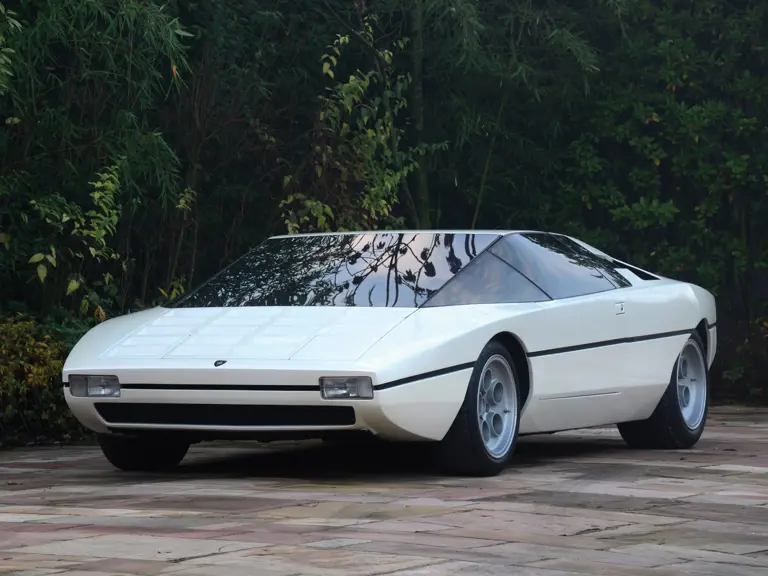
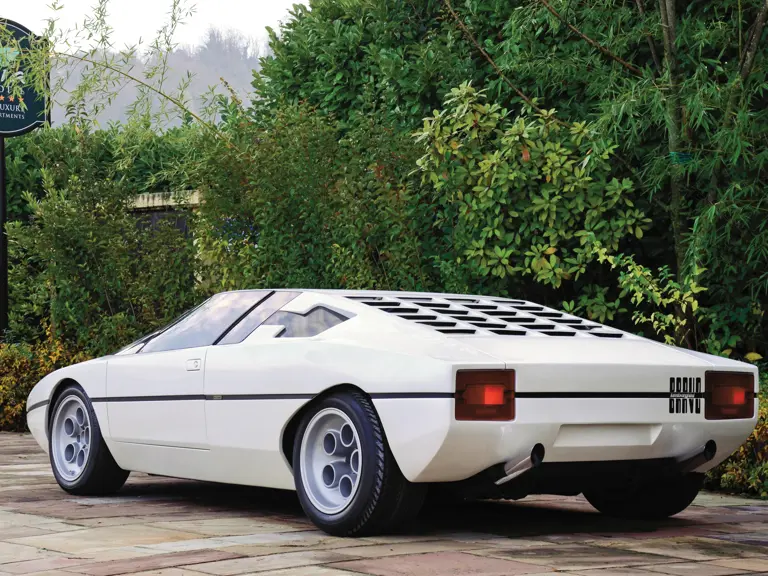
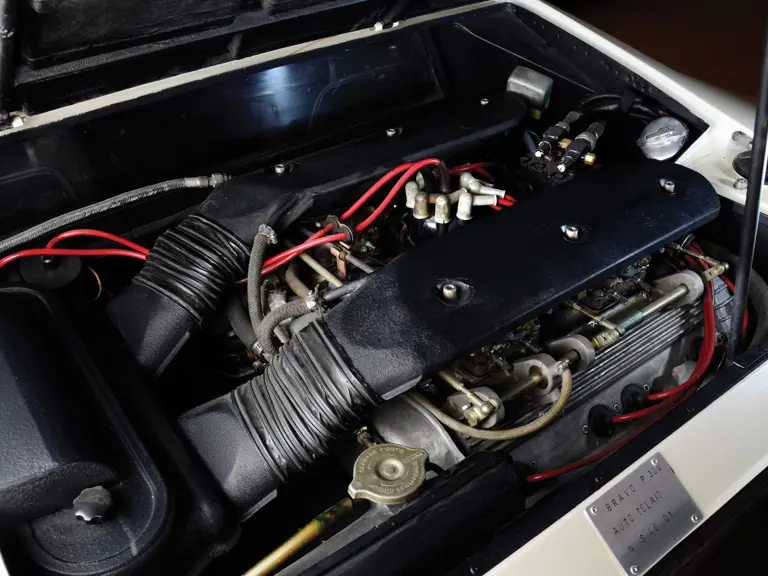
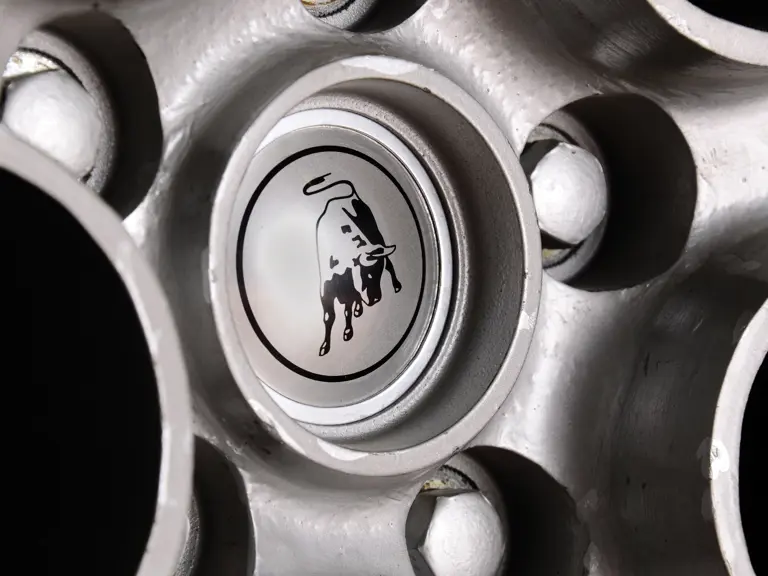


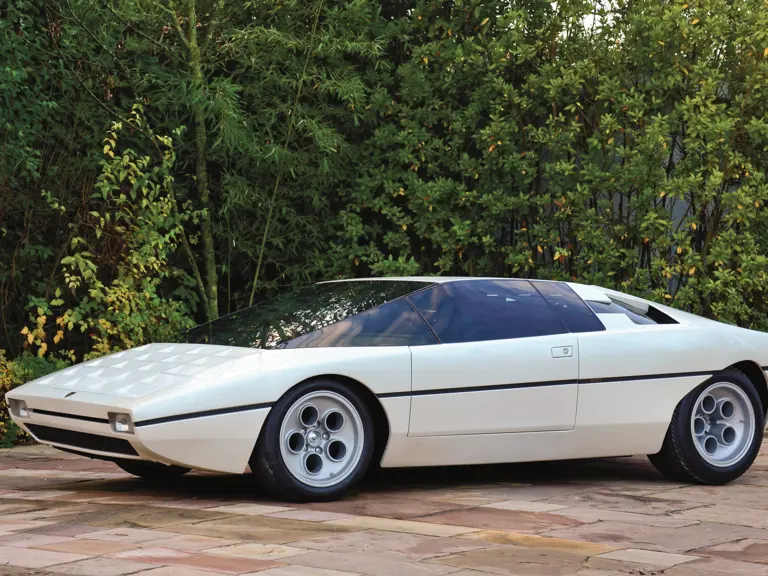
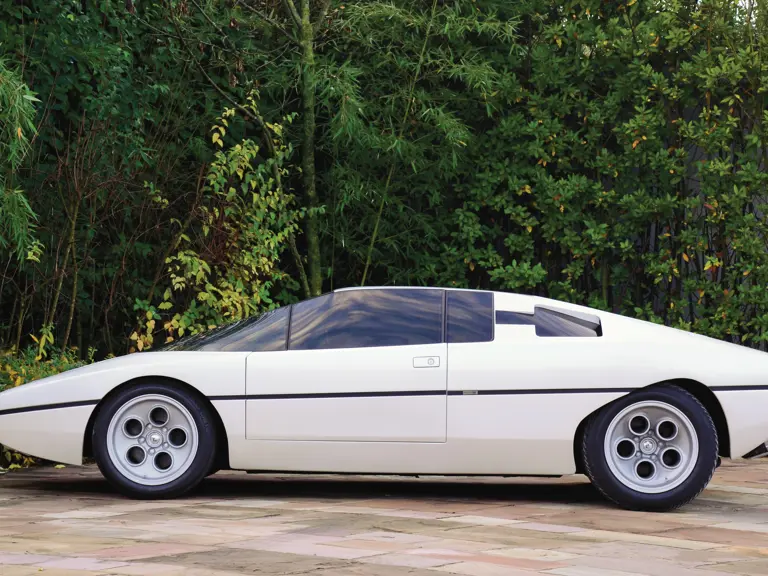
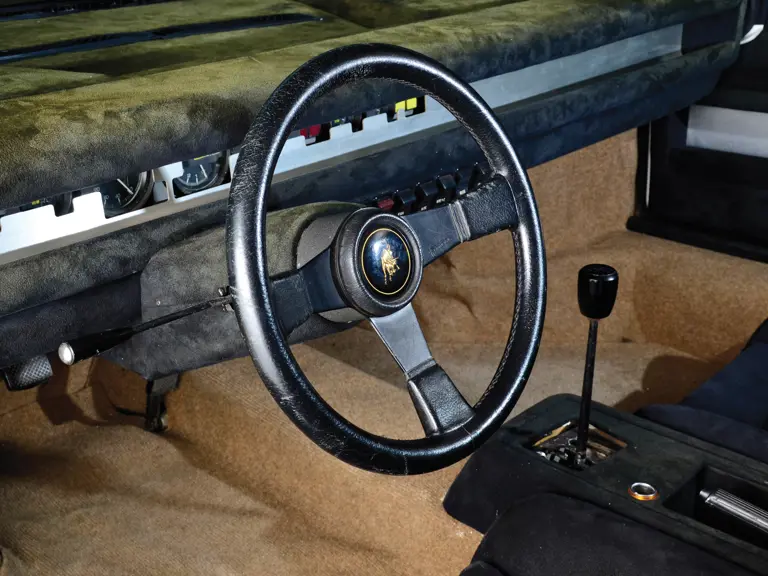

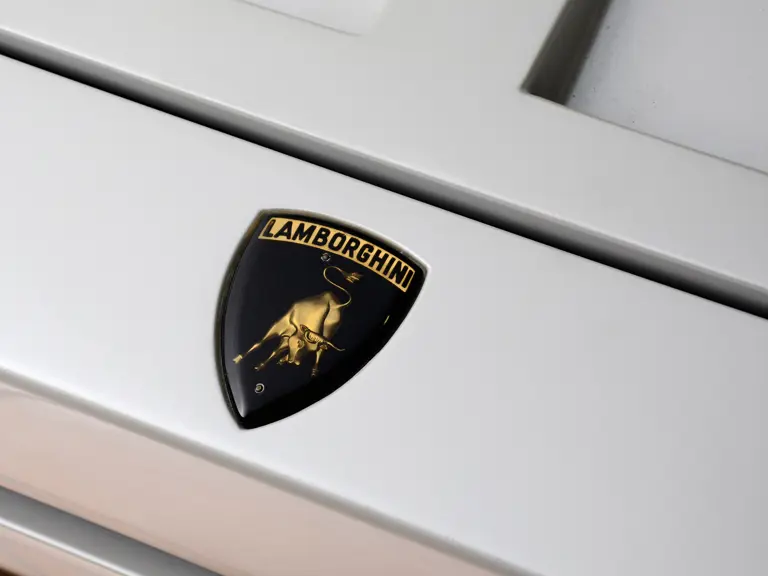
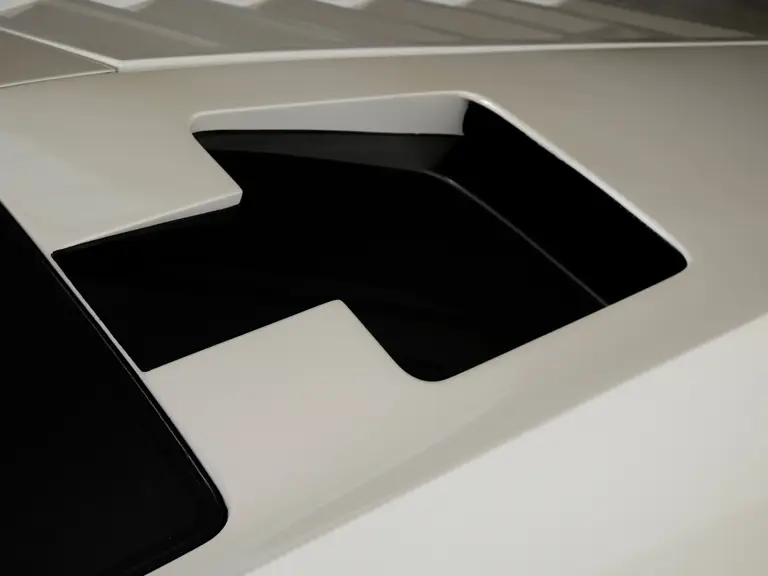
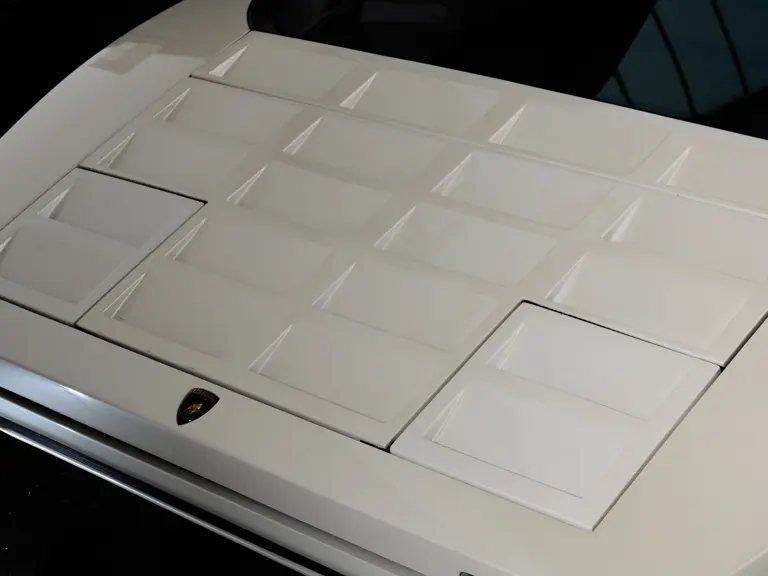
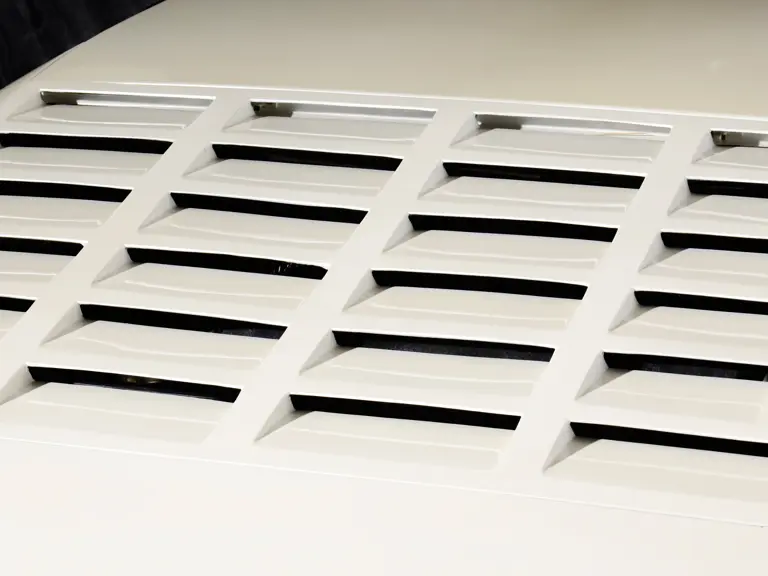
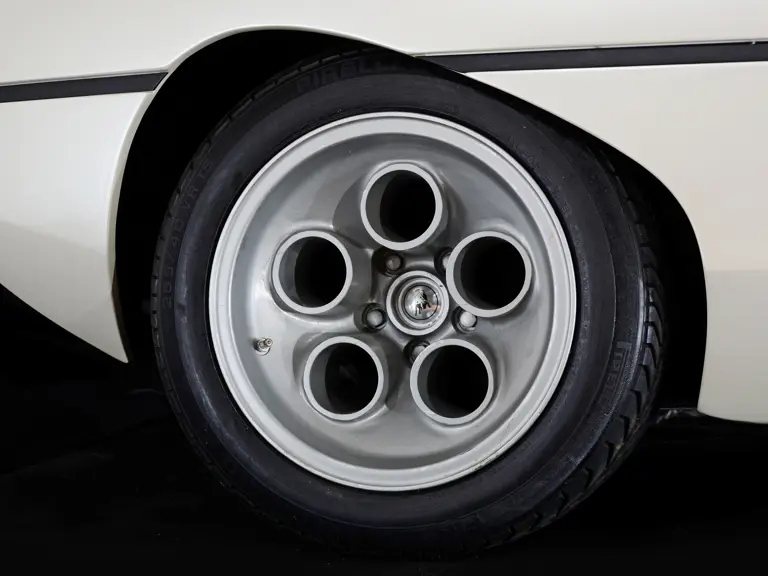
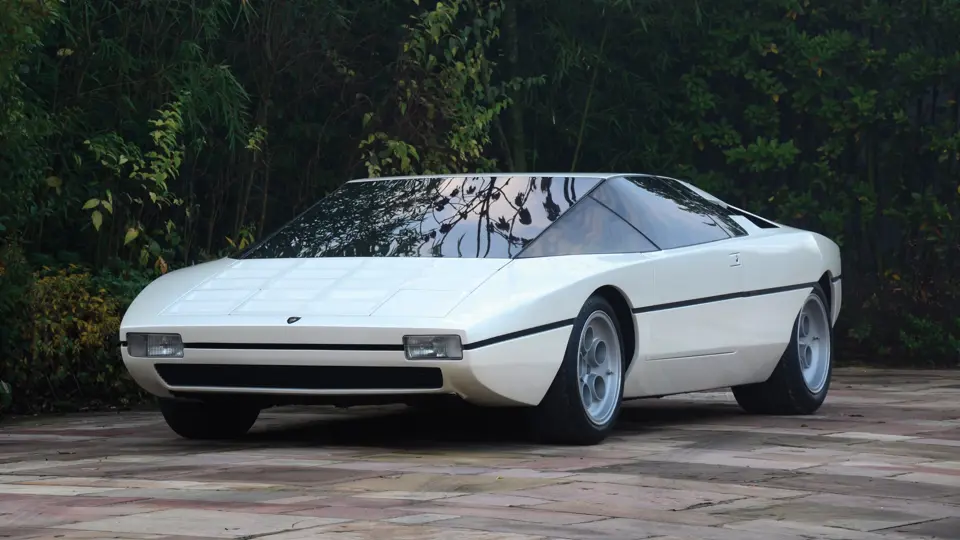
 | Cernobbio, Italy
| Cernobbio, Italy
